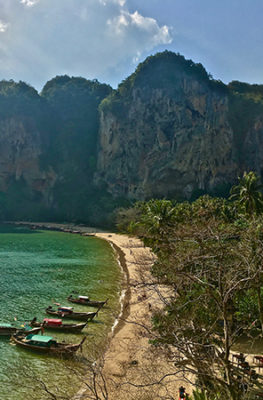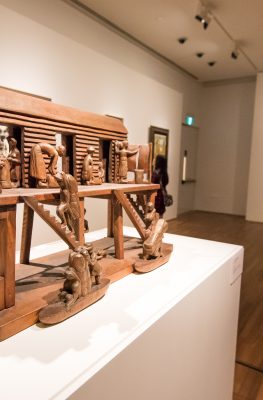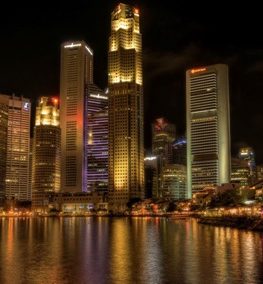Published on March 23, 2015
Singapore, ASEAN’s most developed nation is renowned for its high degree of organization, not only in terms of hardware (e.g. infrastructure, transport systems and urban planning), but also in terms of its software; its people and social services directed towards them, like education and healthcare.
It therefore isn’t a big a surprise that Sports in Singapore has been firmly embedded in socio-economic policy, irrespective whether it regards competitive or recreational sport; or whether it’s for the nation’s reputation or the health of its inhabitants.
Hence, Singapore’s impressive new Stadium and Sports Hub are not coming out of the blue, but were created deliberately in the context of a Sport’s Culture for all Singaporeans summarized as “Live Life. Breathe Sports”, a slogan based on the country’s Vision on Sports:
“Sports is a celebration of a healthy and spirited lifestyle. It ignites passion, builds character and bonds Singaporeans. Together, all of us in Singapore will strive to be active in sports for health, for vigour and for life”
Cartoon drawing to stimulate kids playing sports; Source: http://indigo-alliance.com
As a consequence of this vision, Singapore aims at achieving a variety of goals, addressed to active and passive sports participants, the sports industry and the nation, a/o:
> Teaching every child at least four sports
> Building up spectatorship at live sporting events and attracting more volunteers
> 2 in 3 Singaporeans taking part in sporting activities at least once a week by 2015
> Attaining medal glory in Olympics and regional Games
> Maintaining the position among the top 10 sporting nations in Asia
> Nurturing a steady stream of world-class Singaporean athletes
> Contributing S$2 billion to GDP in 2015
> Developing the sports industry as a growth sector to anchor value-added and export-oriented sporting events
With this in the back of our mind, the question arises what the most popular sports actually are, in Singapore. That, of course depends on active versus passive participants, whether one ask women or men, or whether it regards individual sport activity versus team sport. A 2011 survey among Singaporeans actively participating in sports shows that of the top 10 rankings, the top 3 are occupied by individual sports (jogging, swimming and walking), exercised by some 32% (or over 1 million) of the island’s population of 13 years and older. A substantial downfall of more than 10% compared to 2005. This was followed by 2 team sports (badminton and football). Together with basketball (ranked no. 7), these three team sports gathered 385,000 participants. Gym workout (no. 6) and Physical workout/Training and Home exercise (no. 9) accounted for 180,000+ participants, while cycling (no. 8) and tennis (no. 10) attracted respectively 97,000 and 48,000 partakers. Among the more traditional sports, still within the top 15, Qi Gong, Taiji Quan and Yoga were named.
Singapore’s bodybuilding icon, Agnes Quintessa Lee, staying in shape throughout the years;
Source: http://sg.sports.yahoo.com
When looking at more subjective listings, popular sports often mentioned are again basketball and football, but also bodybuilding (with at least three players bagging at least 2 gold medals each in either Commonwealth and Asian Games, or World Bodybuilding Championships), table tennis and sailing. The latter is one of the most favourite water sports of Singapore. Singaporeans have exhibited their sailing talent in many national and international sports events, inter alia the Asian Games, SEA Games and the Youth Sailing World Championships.
Other popular sports are cricket, Motorsports (the famous Formula 1 night race), rugby and squash, and, concerning water-sports kayaking, scuba diving and cable skiing.
Competitive football is arguably the most popular spectator sport. Singapore has its own professional league (the S. League), launched almost 20 years ago and consists of 10 teams. The National Football team became four time champion of the Tiger Cup, the leading Football Championship of ASEAN (nowadays known as the AFF Suzuki Cup).
Singapore’s athletes also excelled in other international competitions, notably table tennis, badminton, bowling, sailing, swimming and water polo. They have won four Olympic medals (2 Silver, one for weightlifting, the other for table tennis and 2 more Bronze, both for table tennis). In all Asian Summer Games, held from 1951 to 2014, Singapore with 193 medals total (37 Gold, 55 Silver and 101 Bronze) ranked 15 overall in medals tally, out of 46 countries participating.
Coming back to the government’s striving to have kids more involved in sports (e.g. aiming at educating four sports per child) one initiative justifies special attention, namely the revival of traditional games with keen participation of thousands of children in community centres all over Singapore. The 12 traditional games are Bola Tin, Congkak, Five-Stones, Galah Panjang (Long Bamboo), Gasing (Top-spinning), Hoop, Chinese Hop-scotch, Keleret (Pony and Rider), Marbles, Capteh (Shuttlecock), Tick-tock and Tin Walking.
Although most of these indeed are for children chiefly, some are grownup sports, nowadays, in particular Gasing and Capteh, on which we devoted separate articles on ASEAN’s website, http://www.aseantourism.travel recently. To round this article off we mention a third one, Congkak, better known as Mancala in Singapore.
MANCALA
The aim is of the game is to collect as many cowrie shells, seeds or stones in the player’s home base by continuously distributing the shells around smaller holes (houses) until the player runs out of shells to distribute. The person who collects the most shells in his or her base wins. The houses are filled with 7 seeds each while the home bases (or storehouses) are empty. The board normally is made of wood.
Kids playing Mancala on a wooden Congkak board; Source: http:archive.kaskus.co.id
The game is widely played in South East Asia and other countries around the world, albeit with different names. For instance, it’s called Sungka in the Philippines, Wari in East Timor, and Congklak in Indonesia and Malaysia. In Indonesia it originally was played only during grieving times, after the death of a loved one and considered taboo to play the game at other times, but nowadays you will find it played throughout the country
Whether for kids or adults, the centrality of sports is obvious and visible all over Singapore.






